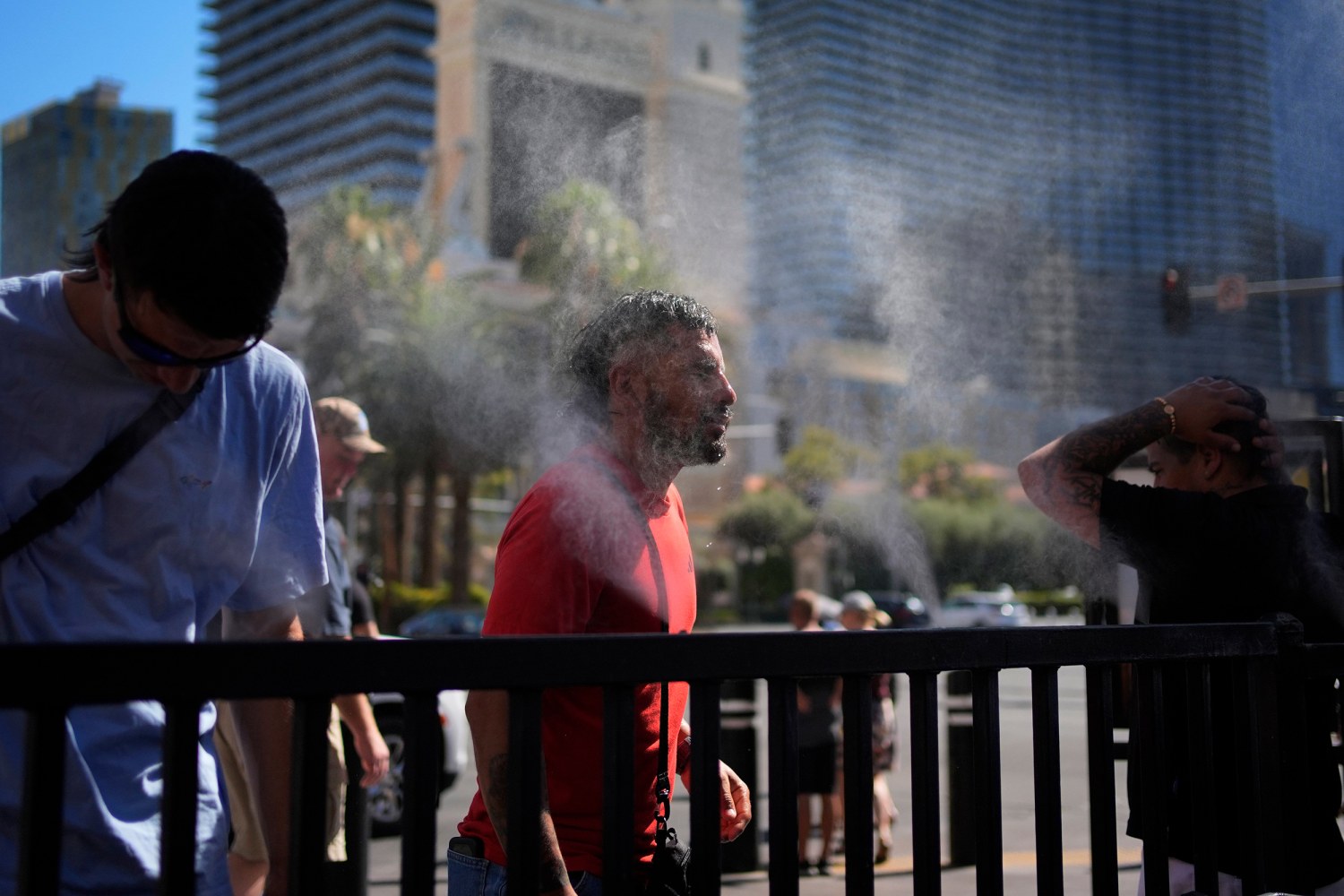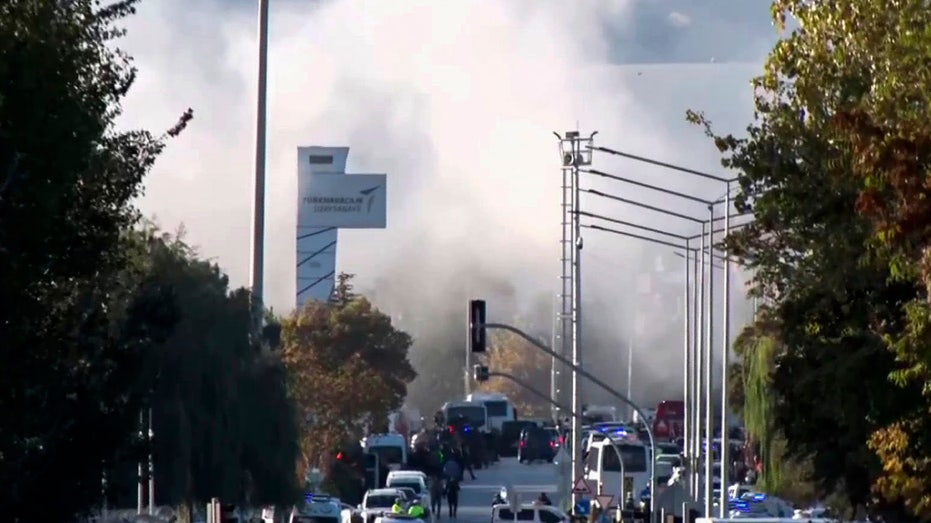The West’s history-making heat wave, which produced seven consecutive days of temperatures 115 degrees or higher in Las Vegas, is now targeting the East Coast, forecasters say.
Nearly 95 million people across the nation were under federal heat alerts on Friday. The highest-level alert, an excessive heat warning, which states life-threatening conditions are at hand, covered nearly 26 million.
In Las Vegas on Friday the temperature once again reached 115, a new record for the date. But relief may be in sight for the West Coast.
The National Weather Service said the high-pressure system that’s been baking the West for most of July is still expected to bring more record high temperatures to much of the West through Saturday but is then expected to shift its life-threatening temperatures eastward.
“Confidence is increasing in extremely dangerous, potentially deadly heat, particularly for urban areas in the Southeast and East Coast beginning Monday and lasting through midweek,” federal forecasters said in a Friday afternoon update.
With the weekend heat expected to push into New England, Connecticut Gov. Ned Lamont announced on Friday that cooling centers statewide will be open from noon Sunday to Wednesday night.
“We just had a heat wave over the first few days of this week, and while it remains hot outside today, it’s looking like another stretch of potentially even hotter weather will impact Connecticut this coming week,” Lamont said in a statement.
Relief for the West
The high pressure system’s move east over the weekend will make way for more clouds and thunderstorm activity, which will help end the record weather and bring slight cooling to the desert Southwest, said meteorologist Morgan Stessman of the weather service office in Las Vegas office.
A bit of relief may be on the way for northwest Arizona and southern Nevada, where monsoonal thunderstorms started to move in on Friday, according to the weather service office in Las Vegas.
Las Vegas has matched or broken high temperature records for each date since July 6, Stessman said, including with an all-time high recorded July 7, when the thermometer marked 120 degrees.
The weather service’s national offices don’t usually keep track of heat-wave time frames. Stessman said the beginning of the current streak of heat was July 3, when the first of the region’s excessive heat warnings for the month was issued.
She said the city’s seven-day streak of 115 degree or greater temperatures was likely to end on Saturday, with an expected high of 110 to 112 falling short of the 115 record for the date.
“Today will be the last day of our more extreme temperatures,” she said. “Compared to 120, it will feel like a nice spring day out here.”
Still, at least four Arizona counties were covered by excessive heat warnings through Saturday.
On Friday, police in Marana, Arizona, arrested a man on suspicion of second-degree murder and child abuse after his 2-year-old daughter was allegedly left in a parked vehicle for three hours on Tuesday and ultimately died, they said.
The temperature in the area remained in the triple-digits until just before 8 p.m. that day, according to National Weather Service data.
Deadly heat
There have been at least 38 heat-related deaths from coast to coast since late June, according to NBC News figures. The summer solstice on June 20 was accompanied by a work-week with temperatures of 90 degrees and higher from the Southwest to the Northeast.
Sizzling temperatures will persist in southeast Texas, where Beryl made landfall earlier this week as a Category 1 hurricane.
Heat index values in the region will once again reach 100 to 105 degrees. The heat index is what it feels like to the human body when the temperature is combined with humidity.
A little under 1 million utility customers remain without power in southeast Texas in Beryl’s aftermath, according to Poweroutage.us, which could make the heat more dangerous, the weather service warned.
Parts of Arizona, Nevada, and Texas recorded their hottest June on record, earth scientists say summer’s heat is being boosted by the warming of the earth’s surfaces.
Temperatures in the Eastern U.S. were at about 3.5 degrees hotter than in similar heat waves in the past, largely as a result of human-caused climate change, scientists with ClimaMeter, a consortium that analyzes extreme events, found.
Severe storm threat
This weekend, an active storm system is expected to produce several rounds of severe storms for the Northern Plains, Upper Midwest and Great Lakes into next week.
About 7 million people are at risk for severe storms across North Dakota, Minnesota and Wisconsin Saturday. On Sunday parts of North Dakota, and northern Minnesota will once again be at risk for severe storms, with the risk extending down to Chicago.
On Monday, 23 million people are already at risk for all hazards including in Minneapolis, Green Bay, Milwaukee, Madison and Chicago.
Around 18 million people are under flood watches in an area stretching from South Carolina to Massachusetts, including Philadelphia and New York City. The Weather Prediction Center has issued a slight risk of excessive rainfall, level 2 out of 5, from the Carolinas’ coast through the coastal Mid-Atlantic due to thunderstorms that will impact the region over the weekend.










